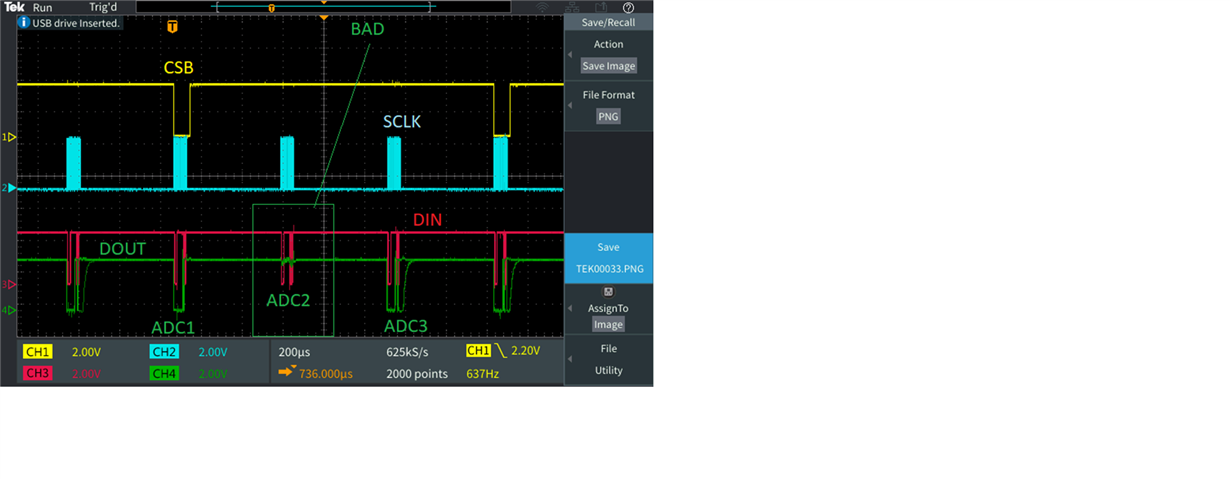Other Parts Discussed in Thread: MSP430F5529
Hello,
I'm connecting 3 magnetometers to 3 ADS1118s. Two of the ADS1118s are functioning OK, but one ADS1118 has a high DOUT all the time (see attached scope shot).
I've tried debugging with the following:
- Measured the input to the bad ADS1118, and the differential input ~10mV (the ADS1118's FSR is 1.024V)
- Made sure the bad ADS1118's DOUT is not connected to VDD because all the ADS1118's DOUT are tied together, and DOUT for the other two ADS1118 are OK
- I even tried disabling the internal ADS1118 pull-up but that didn't help
- I made sure the CSB for the bad ADS1118 is toggling at the right time and only when I'm calling that ADS1118
- I have 20 boards like this, and I'm seeing this problem on 2 boards; the other 18 boards all have working ADS1118s
Is there anything else I can try to troubleshoot this issue? My last resort is to swap out the bad ADS1118 but it's quite hard since it's only a flex board and doing so might damage the board.
Thanks.


